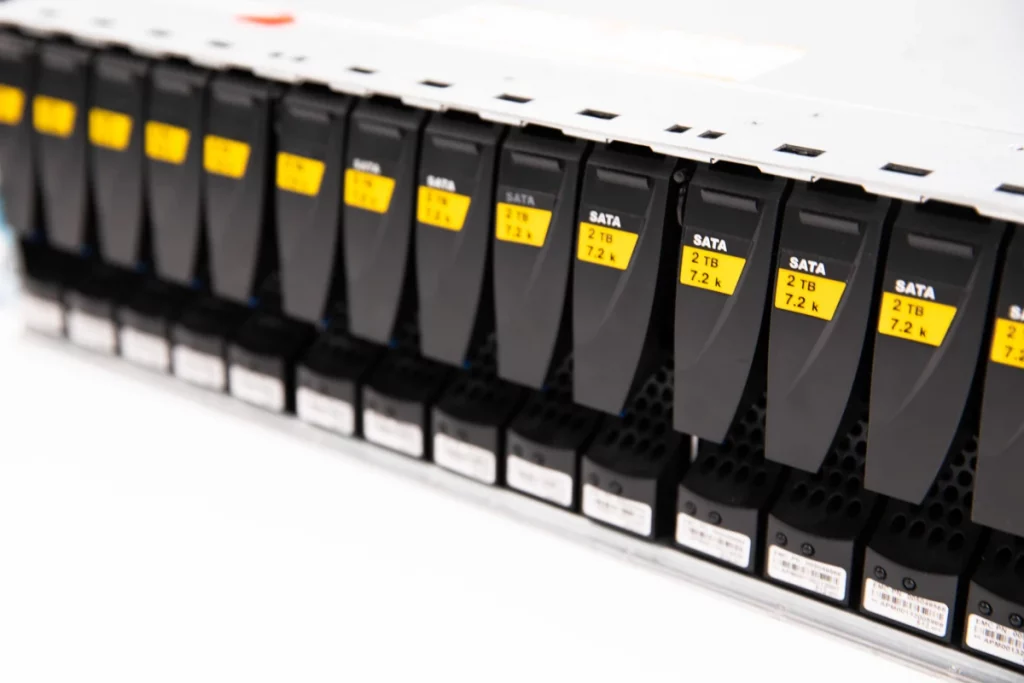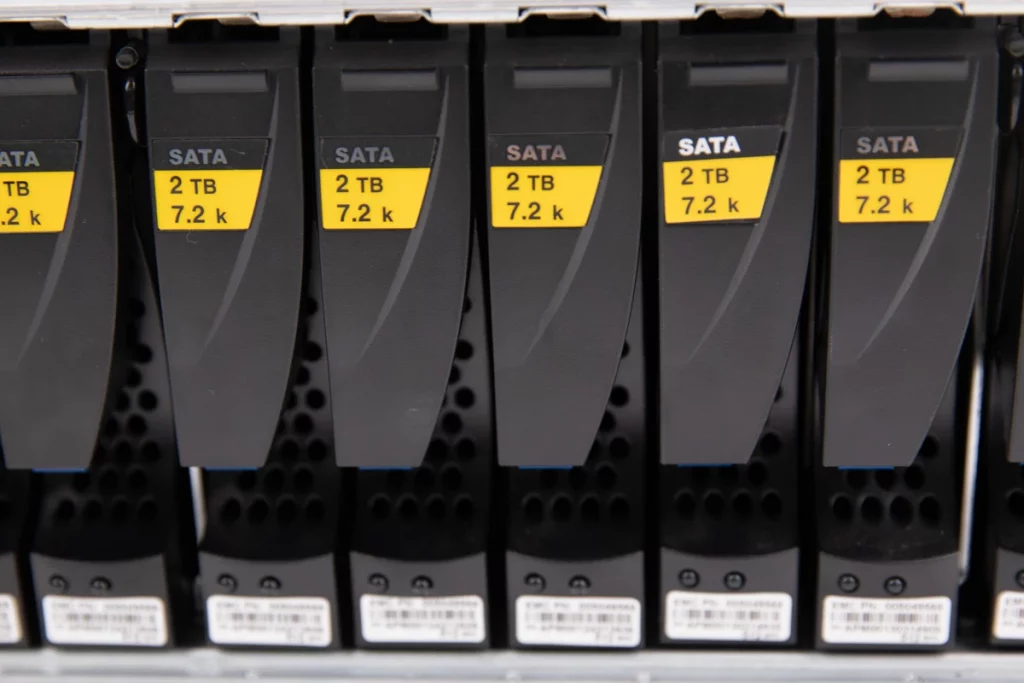Redundant Array of Independent Disks (RAID) is a widely adopted data storage technology that offers improved performance, fault tolerance, and data protection. RAID arrays combine multiple physical disks into a logical unit, providing various levels of data redundancy and reliability.
However, despite its advantages, no storage system is entirely immune to failures. In this blog post, we will delve into the failure rates associated with different RAID levels and configurations, shedding light on their respective strengths and weaknesses.
RAID 0: The Striped Array
RAID 0, often referred to as a striped array, does not provide any redundancy or fault tolerance. It distributes data across multiple drives to enhance performance, but a failure in any single disk can result in complete data loss.
Since RAID 0 does not employ redundancy or error correction mechanisms, its failure rate is relatively high compared to other RAID levels. The RAID 0 failure rate is equal to the sum of the failure rates of all individual disks in the array. Consequently, while RAID 0 offers impressive performance benefits, it carries a significant risk of data loss.
RAID 1: The Mirrored Array
RAID 1, or the mirrored array, provides complete data redundancy by duplicating data across multiple disks. In this configuration, if one disk fails, the mirrored disk continues to function seamlessly, ensuring data integrity and availability. The failure rate of RAID 1 depends on the failure rate of a single disk since both disks contain identical data.
Therefore, the failure rate of RAID 1 is generally lower compared to RAID 0, but higher than other RAID levels that employ striping with parity. RAID 1 is an excellent choice for applications that prioritize data redundancy and quick recovery, as it offers a high level of protection against disk failures.
RAID 5: The Striped Array with Parity
RAID 5 combines striping and parity to offer both performance and redundancy. Data and parity information are distributed across multiple drives, enabling the array to tolerate the failure of a single disk. The RAID 5 failure rate depends on the number of disks in the array and the time required to rebuild the array after a disk failure.
During the rebuilding process, the remaining drives are subjected to increased workload, which can potentially lead to further failures. However, with proper monitoring and maintenance, the probability of failure in RAID 5 is relatively low. RAID 5 strikes a balance between performance and fault tolerance, making it a popular choice for many applications.

RAID 6: Enhanced Redundancy
RAID 6 is an extension of RAID 5 that provides increased fault tolerance by employing double parity. This means that RAID 6 arrays can withstand the failure of two disks simultaneously. The additional parity information comes at the cost of reduced usable storage capacity.
However, the enhanced redundancy offered by RAID 6 significantly lowers the probability of data loss due to multiple disk failures. The failure rate of RAID 6 is generally lower than that of RAID 5, making it a suitable choice for critical data storage applications where high fault tolerance is crucial.
RAID 10: Combining Mirroring and Striping
RAID 10, also known as RAID 1+0, combines the benefits of mirroring and striping. It requires a minimum of four drives, where data is mirrored first and then striped across mirrored pairs. RAID 10 provides excellent performance and fault tolerance, as it can withstand multiple disk failures within each mirrored pair.
However, it is worth noting that if both drives in a mirrored pair fail, data loss can occur. Nonetheless, the failure rate of RAID 10 is relatively low due to its robust redundancy mechanism. This makes it a popular choice for mission-critical applications where both performance and high data availability are paramount.
Understanding RAID Failure Rates
Understanding the failure rates associated with different RAID levels and configurations is crucial when selecting the most suitable solution for specific storage requirements. RAID 0 offers high performance but lacks redundancy, resulting in a higher failure rate. RAID 1 provides complete data redundancy, reducing the probability of failure compared to RAID 0 but falling short in terms of storage efficiency.

RAID 5 and RAID 6 strike a balance between performance and redundancy, with RAID 6 offering higher fault tolerance. RAID 10 combines the best of both mirroring and striping, offering excellent performance and fault tolerance.
When choosing a RAID level and configuration, it is essential to consider the importance of data, performance requirements, and available resources.
Regular monitoring and maintenance of RAID arrays, performing backups, and having a well-defined disaster recovery plan in place are critical to mitigating the risk of data loss.
By making informed decisions and implementing appropriate measures, organizations can minimize the impact of potential failures and ensure the integrity and availability of their data.
Frequently Asked Questions
What is RAID failure rate?
RAID failure rate refers to the likelihood of a RAID array experiencing a disk failure or encountering data loss. It varies depending on the RAID level and configuration chosen.
Which RAID level has the highest failure rate?
RAID 0 has the highest failure rate among commonly used RAID levels. Since RAID 0 lacks redundancy and fault tolerance, the failure of any single disk in the array can result in complete data loss.
Does RAID 1 eliminate the risk of data loss?
RAID 1 provides complete data redundancy by mirroring data across multiple disks. While it greatly reduces the risk of data loss, it does not eliminate it entirely. If both mirrored disks in RAID 1 fail simultaneously, data loss can occur.
How does RAID 5 handle disk failures?
RAID 5 utilizes striping with parity, allowing it to tolerate the failure of a single disk. The parity information distributed across the remaining disks is used to reconstruct the data from the failed disk. However, during the rebuilding process, the remaining drives may experience increased workload and a higher chance of failure.
What is the advantage of RAID 6 over RAID 5?
RAID 6 provides enhanced fault tolerance compared to RAID 5. With double parity, RAID 6 can withstand the failure of two disks simultaneously, reducing the risk of data loss. This additional redundancy comes at the cost of reduced usable storage capacity.
Is RAID 10 more reliable than other RAID levels?
RAID 10 offers a high level of reliability due to its combination of mirroring and striping. It can withstand multiple disk failures within each mirrored pair. However, if both drives in a mirrored pair fail, data loss can occur. RAID 10 is considered a robust RAID level, particularly for mission-critical applications.
Can RAID completely prevent data loss?
While RAID provides improved fault tolerance and protection against disk failures, it does not guarantee complete immunity to data loss. Other factors such as power surges, natural disasters, and human errors can still lead to data loss. It is crucial to have additional data backup and disaster recovery measures in place to ensure comprehensive data protection.